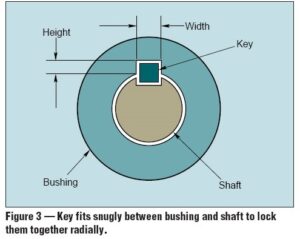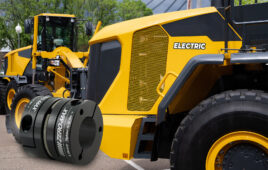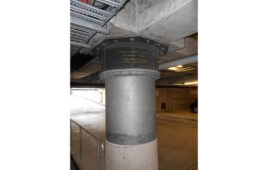By Joyce Laird, contributing editor
Taking a look at keyed and keyless couplings from the applications point of view puts the choice in a very clear perspective. Both are needed in many applications and both bring specific features and benefits.

Bobby Watkins, V.P. Sales. Ruland Manufacturing says that the first thing to look for when selecting of which type of coupling to use is to identify the worst case torque requirement the coupling will need to endure. “You need to know what the potential risk is if the keyless design does slip. This is the best way to know if it is possible to use a keyless design in your application.”
“A keyless coupling has a round bore and relies solely on the clamping force, or set screw holding power, to lock on to a round shaft,” he adds. “A keyed coupling has a keyway/slot cut into the bore that matches with a keyway/slot cut into the shaft. A key is inserted into the slot, half imbedded in the shaft and half imbedded in the coupling to give a positive drive connection.”
He notes that because of the range of applications involved, in many cases using a keyed coupling on a keyed shaft provides increased torque capacity due to the strength of the key in addition to set screw holding power, or the clamp holding power.
“If the assembly requires this added protection the addition of keyways in shafts and couplings does add cost to both the coupling and the driven shaft component. It also complicates and increases system assembly time. Therefore, in many typical applications where the torque should not exceed the clamping force of the coupling on the shaft, or set screw holding power could not be exceeded, using keyless couplings will save money and assembly time.”
“However, if an application has the risk of personal injury or damaged products if the coupling where to slip on the drive shaft, then using keyed components is always worth the added cost, time and complexity,” he adds.
While the actual applications requiring both types of couplings are far to long to list, Watkins says that two very simple examples of conveyor applications give an excellent picture of how and why to select one type of coupling over the other.
“The first is a simple conveyer assembly as seen at a supermarket checkout. If the coupling slips on the shaft in this type of assembly, the belt just does not move. There is no risk of injury or product damage. This is a perfect example of where to use keyless couplings.”
“An incline conveyor at a package handling facility is a completely different type of heavy-duty conveyor,” he says. “If this conveyor is loaded with hundred of pounds of packages and the coupling slips on the shaft, gravity will drive the conveyor backwards, and the packages will fall back toward the operator or anyone near the conveyor, creating damage to the goods on the conveyor and a possible personal injury situation. Definitely use keyed couplings in this type of scenario.”
Of course these examples are only two of many but, the thought behind them remains the same regardless of the coupling application, it’s all in knowing the needed strength and safety requirements when specifying any components. When in doubt, contact an expert in the field.
Ruland
www.ruland.com
Coupling Tips
Filed Under: Coupling Tips




